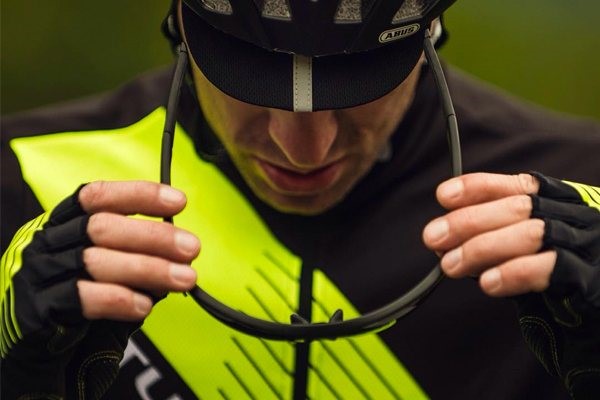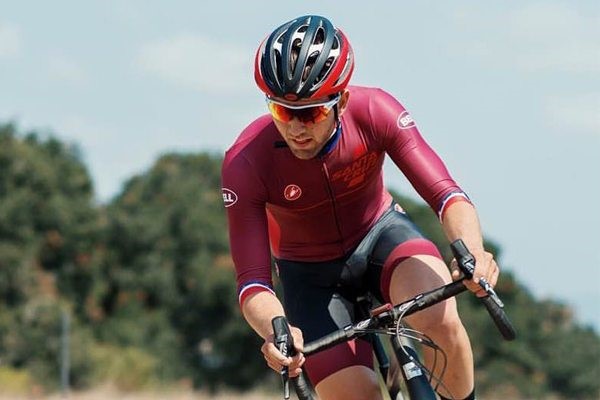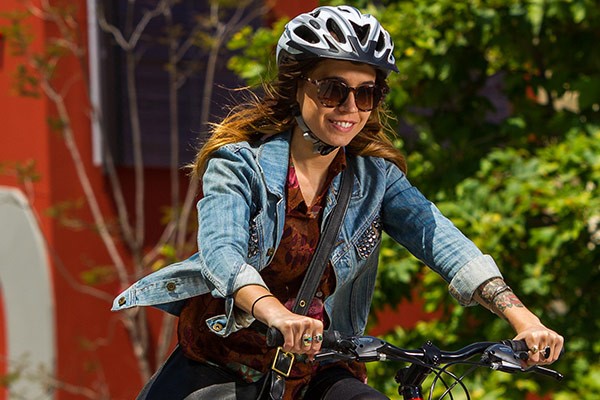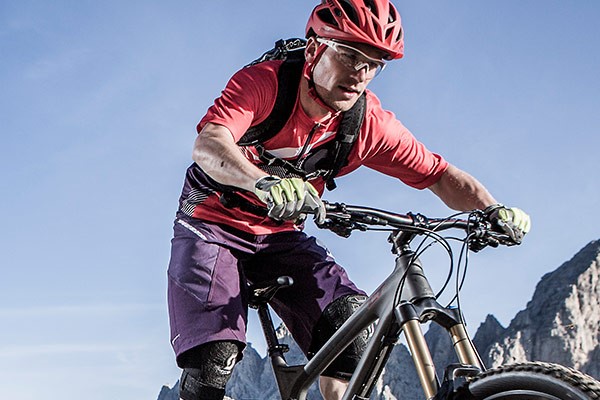Why buy a pair of cycling glasses?
Cycling glasses aren't just a fashion accessory to make you look cool, although they do come in super stylish designs. They're specifically designed to protect your eyes from harsh sunlight as well as from flying debris – stones, grit and the occasional bug.
Wearing a pair of cycling glasses can enhance your enjoyment on every ride with lighter frames than casual sunnies, shatterproof lenses and venting to stop them from steaming up. These specific glasses often have wrap-around designs for improved peripheral visibility.
In this cycling glasses guide we'll cover frames, lenses and key features to look for in a good pair.
How to choose a pair of cycling glasses
Most cycling glasses are built out of polycarbonate plastic as this can be easily molded for wrap-around sporty coverage. Compared to metal frames, plastic is much safer if you're unfortunate enough to crash.
You'll often find thinner, more streamlined frames that are made from light materials on performance cycling glasses.
You can distinguish between standard glasses and cycling glasses by their frame design. Cycling glasses will sit closer to the face with curved lenses and arms. Standard glasses have a flatter profile and are a good option for recreational use.

Lenses
Single & double lenses
You can choose to buy a single lens or dual lens pair of glasses. A single lens will offer more coverage and improved peripheral vision, but you're often limited to one lens tint. Dual lens glasses are often available with interchangeable lenses so you can switch out lenses for the conditions you'll be riding.
Interchangeable lenses
Many cycling glasses come with a selection of lenses. The higher the price, usually the more lenses you'll get. Interchangeable lenses are great for those who ride in all weather conditions.
It's a good idea to choose glasses with lens tints for the conditions you're most likely to riding in (especially if you choose a fixed pair of glasses). For the UK that means overcast skies with the occasional bright day. In general, the brighter the light, the darker the lens you want.

Lens tint guide

Clear
Night riding & overcast skies. Great for protection against debris, not sunlight.

Yellow
Overcast and low light conditions. Offers improved clarity when light is dim.

Brown / amber
Variable conditions. They enhance contrast and improve depth perception.

Blue / purple
Low light conditions. Look stylish and reduce glare while enhancing colour perception.

Grey
Low to bright conditions. A good option for daily use without distorting true colour perception. They also reduce glare.

Pink / red
Variable conditions. Offer improved visual depth and greatest amount of contrast.
Photochromic lenses
Another option to consider are photochromic lenses. These lenses will tint with changes in light intensity. They're a good idea for unpredictable weather when it can be light one minute and dark the next. Mountain bikers benefit from these lenses when swooping between wooded areas and open trails.
With photochromic lenses you don't need to change lenses all the time which can be annoying. However, they don't offer the same range of tint as choosing specific lenses.
Polarized lenses
Polarized lenses are coated with a special chemical film to reduce glare and reflection so you can see objects ahead with improved clarity. This is especially useful when sun shines on standing water and wet roads. Polarized lenses from brands like Oakley also offer improved UV protection too.
Polarized lenses work by filtering out horizontal light waves which cause glare while leaving vertical light waves (the useful light we use to see clearly).
Tinted vs polarized lenses
Tinted lenses are very good at reducing brightness and dampening glare. However, polarized lenses will eliminate glare completely without impacting your ability to distinguish shapes and objects ahead of you.
UV protection
Always check cycling glasses for UV protection as the colour of the lens does not accurately represent its ability to block these harmful rays.
Also, be aware that darker lenses without UV protection can cause more eye damage than wearing no sunglasses as your pupil dilates and allows more UV light to enter your eye.
Anti-scratch / shatterproof
A good feature to look for is anti-scratch or shatterproof lenses. Anything from a small stone kicked up by your front wheel to clumsy hands can ruin your lenses, so having this extra protection will reduce expense.
Anti-fog
Anti fog coating or small vents cut into the lens can help to stop your glasses steaming up when you're riding slowly or have stopped at traffic lights.
Which cycling glasses are best for me?

Recreation / commuting
If you're not cycling at high speed or tackling rugged terrain then you can choose a pair of standard sunglasses with UV protection. There is no need for a sporty design.

Road biking
Fast riding and performance orientated cycling means a close fit with venting are a good choice.
Choose interchangeable lenses that focus on improving contrast.

Mountain biking
The slower average speed and upright riding means you can get away with a more casual style.
Variable light conditions from dense shade to bright light means photochromic lenses could be a good option.
Summary
Every time you head out on a ride you should wear cycling glasses. They protect your eyes from UV and glare whilst improving contrast and depth perception. Even when the sun isn't glaring, these glasses will protect against flying debris.
Choose a style that suits you, then look for lenses that will work for the conditions you're going to be riding.





